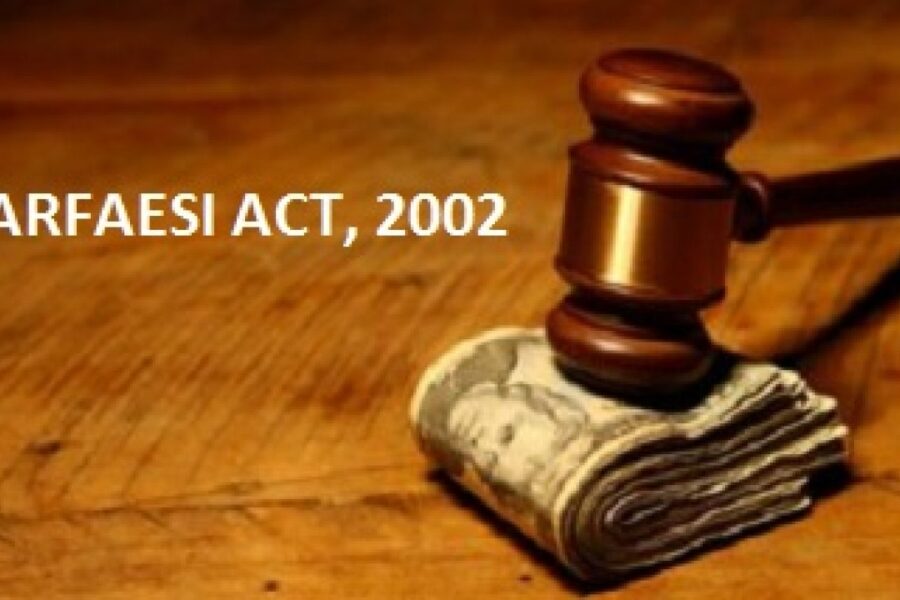The Securitisation and Reconstruction of Financial Assets and Enforcement of Security Interest Act, 2002, known as the SARFAESI Act, marked a transformative change in the manner of debt recovery in India. Enacted against the backdrop of mounting non-performing assets in the late 1990s and early 2000s, the legislation gave unprecedented powers to banks and financial institutions to enforce their security interests without prior judicial intervention. The principal objective was to expedite recovery, reduce the burden on the courts, and restore the health of the banking sector by freeing up capital otherwise trapped in prolonged litigation.
Before SARFAESI, recovery processes were primarily governed by the Recovery of Debts Due to Banks and Financial Institutions Act, 1993 (RDDBFI Act) and provisions of the Transfer of Property Act. These frameworks were slow, and debt enforcement often dragged on for years. The Narasimham Committee (1991 and 1998) and the Andhyarujina Committee both recommended sweeping reforms. They stressed that unless lenders were given the ability to take possession of secured assets quickly, India’s financial system would continue to suffer from a crippling backlog of defaulted loans. Parliament responded by passing SARFAESI, which came into effect on 21 June 2002.
The Act has three functional components: securitisation, reconstruction of financial assets, and enforcement of security interests. Through securitisation, lenders can bundle financial assets and convert them into marketable securities, thereby raising liquidity. The reconstruction of financial assets is facilitated through Asset Reconstruction Companies (ARCs), which acquire non-performing assets from lenders and attempt to restructure or recover them. The most impactful provision, however, is the enforcement mechanism under Section 13. It allows a secured creditor, upon classifying a borrower’s account as a non-performing asset and after issuing a 60-day demand notice, to take possession of the secured asset, take over management, appoint a manager, or sell the asset to recover dues, all without approaching the courts.
The constitutionality of SARFAESI was challenged soon after its enactment in the landmark case of Mardia Chemicals Ltd. v. Union of India (2004) 4 SCC 311. Borrowers argued that allowing creditors to enforce security without judicial oversight violated principles of natural justice. The Supreme Court upheld the validity of the Act, emphasising that the right of the borrower to approach the Debt Recovery Tribunal under Section 17 served as an adequate safeguard. However, the Court struck down the provision that required borrowers to deposit 75% of the claimed amount before filing an appeal, holding it to be onerous and arbitrary. This judgment firmly established the balance between creditor empowerment and borrower protection within SARFAESI.
In Transcore v. Union of India (2008) 1 SCC 125, the Supreme Court clarified that SARFAESI is complementary to the RDDBFI Act, not mutually exclusive. A bank or financial institution can invoke SARFAESI even if recovery proceedings have already been initiated before a Debt Recovery Tribunal under the RDDBFI Act. This interpretation reinforced the creditor’s strategic flexibility, allowing parallel or alternative use of remedies to secure faster recovery.
Another significant ruling came in United Bank of India v. Satyawati Tondon (2010) 8 SCC 110, where the Supreme Court cautioned High Courts against interfering under Article 226 of the Constitution in SARFAESI matters when an effective alternative remedy is available before the DRT. The Court criticised the tendency of borrowers to bypass statutory forums and stressed the need for judicial discipline in maintaining the legislative intent of speedy recovery. This case considerably reduced frivolous writ petitions and reinforced the statutory process.
The judiciary has also intervened to address procedural fairness in enforcement. In Harshad Govardhan Sondagar v. International Assets Reconstruction Company Limited (2014) 6 SCC 1, the Supreme Court dealt with the rights of tenants in mortgaged properties. It held that if a lease is validly created before the creation of the mortgage, the possession rights of the tenant must be respected, even in SARFAESI proceedings. This ruling was crucial in protecting third-party interests against indiscriminate asset takeovers.
In Authorised Officer, Indian Overseas Bank v. Ashok Saw Mill (2009) 8 SCC 366, the Court observed that DRTs have the power to examine not only the legality of measures taken under Section 13(4) but also the validity of the underlying mortgage and other foundational issues. This expanded the Tribunal’s supervisory role, reinforcing that creditor actions under SARFAESI are not immune from scrutiny.
While SARFAESI has undoubtedly improved recovery timelines and instilled greater repayment discipline, its implementation has not been without issues. Recovery rates vary significantly depending on the asset quality and market conditions. In many cases, enforcement is stalled by challenges in the DRTs or higher courts, diluting the intended speed of the process. The Reserve Bank of India has had to step in with guidelines to ensure transparency in the sale of secured assets, prevent collusive bidding, and protect borrower rights.
In 2016, the Act was amended to strengthen the role of ARCs, streamline procedures, and align certain provisions with the Insolvency and Bankruptcy Code, 2016 (IBC). The integration of SARFAESI with IBC proceedings has given creditors a broader toolkit, enabling them to decide between quick asset enforcement under SARFAESI or comprehensive insolvency resolution under the IBC. In Vishal N. Kalsaria v. Bank of India (2016) 3 SCC 762, the Supreme Court reiterated that SARFAESI cannot override state rent control laws, once again affirming that creditor rights must coexist with other statutory protections.
Overall, the SARFAESI Act stands as a milestone in India’s legislative response to the NPA crisis. It has changed the borrower-lender relationship, enhanced creditor confidence, and reduced dependence on court-driven recovery. Judicial decisions have played a vital role in refining its scope, preventing misuse, and balancing the competing interests at stake. As the financial sector continues to evolve, SARFAESI’s success will depend on constant refinement, robust institutional capacity in the DRTs, and a continued commitment to balancing efficiency with fairness.
Contributed by Vaibhav Goyal (intern)

